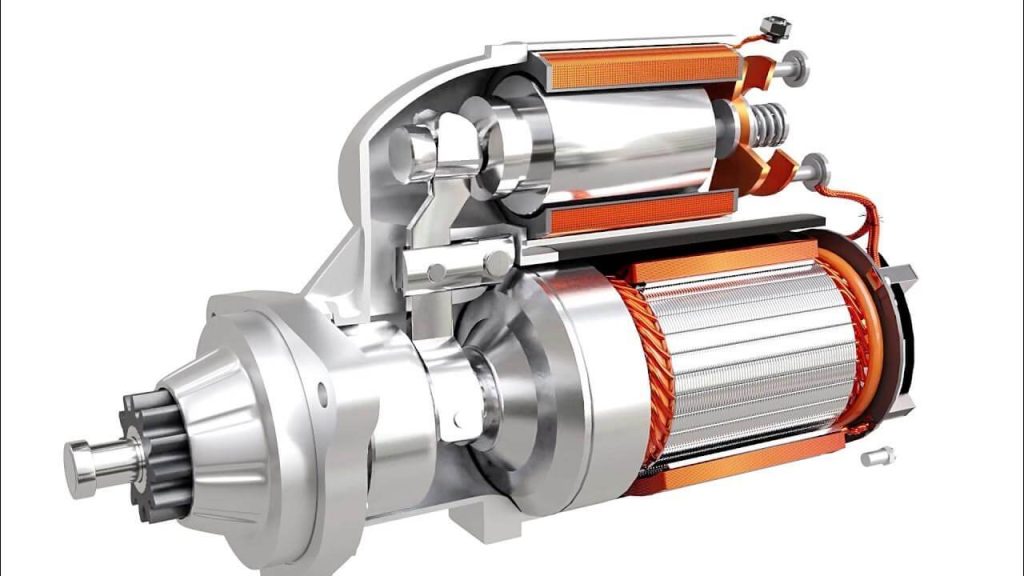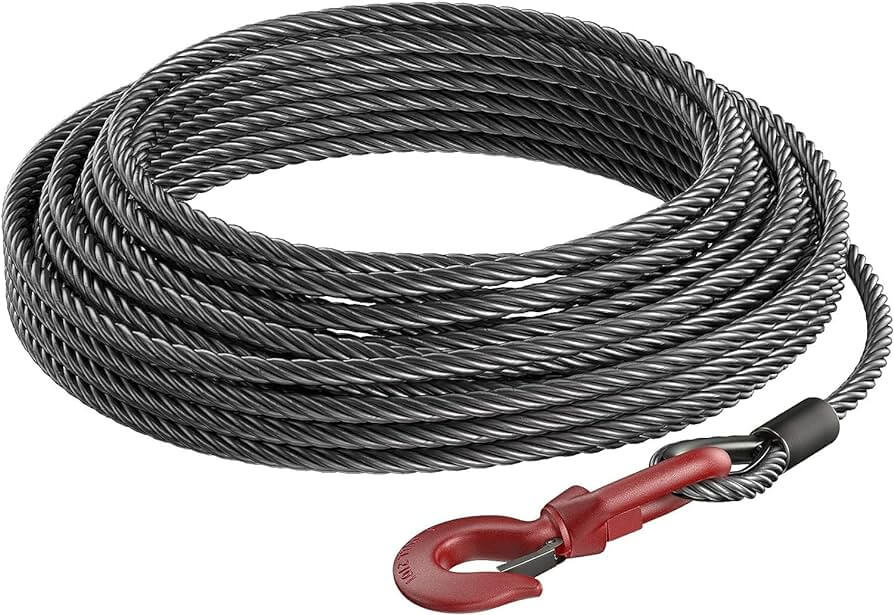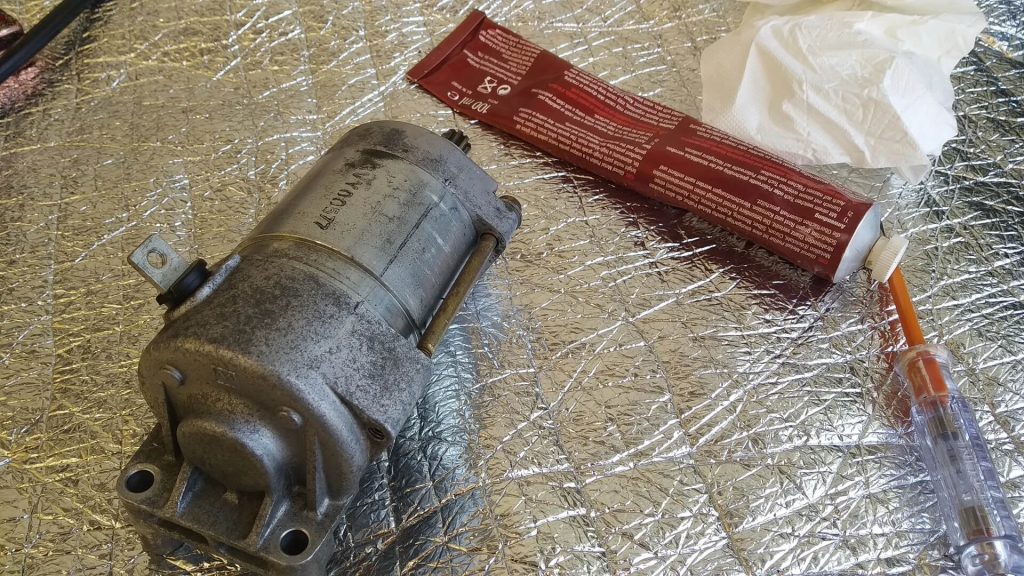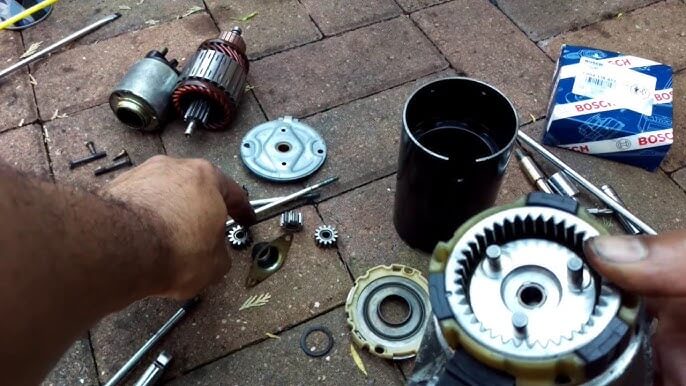Have you ever thought about the magic of repurposing old car parts into something incredibly useful?
That’s exactly what we’re diving into today: turning a starter motor into a winch.
In this comprehensive DIY guide, you’ll learn the complete process for transforming an inexpensive vehicle starter motor into a custom winch suitable for vehicles up to X tons with up to X tons of pulling capacity.
let’s go!
Understanding Starter Motors

First, let’s talk about the heart of our project: the starter motor. Commonly found in cars, these motors are designed to kick-start the engine.
What makes them perfect for a DIY winch is their robustness and high torque. Essentially, we’re leveraging their power to pull heavy loads, something they’re inherently designed to do, albeit in a different context.
Tools and Materials Needed
Starter Motor
The centerpiece of your winch. Ideally, choose a starter motor from a larger vehicle, like a truck or an SUV.
These motors are generally more powerful and can handle larger loads.
The starter motor should be in good working condition to ensure it can generate enough torque for winch operations.
Winch Drum
This is where your cable or rope will be wound. The drum needs to be sturdy enough to handle the tension and stress of pulling.
A steel drum is a common choice due to its strength and durability.
The size of the drum will dictate how much cable it can hold, so consider the length and thickness of the cable you plan to use.
Heavy-Duty Cables

These are essential for connecting the winch to a power source and for the winch cable itself.
The winch cable needs to be strong and durable, typically made of steel or synthetic materials.
For electrical connections, ensure the cables can handle the current required by the starter motor without overheating or degrading.
Reliable Power Source
Your winch needs power to operate. A standard 12-volt car battery is often sufficient, but ensure it can deliver the necessary current. If your starter motor is from a large vehicle, it may require a more powerful battery or an alternative power source.
Bolts, Nuts, and a Sturdy Frame
You’ll need various bolts and nuts to securely assemble your winch. The frame holds everything together and supports the entire mechanism.
It needs to be robust enough to withstand the forces exerted by the winch during operation. You can fabricate this from steel or any other strong material.
Safety Gear
Safety cannot be overstated in such projects. Gloves protect your hands from sharp edges and abrasions, while goggles shield your eyes from any flying debris or sparks during the assembly. Also, consider wearing protective clothing to safeguard against any unforeseen accidents.
Step-by-Step Guide to Making the Winch
Creating a winch from a starter motor involves several detailed steps, each critical for the functionality and safety of the final product. Here’s a deeper dive into each step:
Preparing the Starter Motor

Begin with a thorough inspection and cleaning of the starter motor. This is not just about dusting off dirt; it’s about ensuring the motor is in optimal working condition.
Look for signs of wear, such as frayed wires or corroded terminals, as these could impact performance. If you find any damage, it’s best to repair or replace the affected parts before proceeding.
The motor should be free of grease and grime, which could otherwise hinder its operation. This step is vital because the entire winch’s efficiency hinges on the motor’s condition.
Building the Winch Drum
The drum is a critical component that will hold and wind the winch cable or rope. Constructing a winch drum requires precision and understanding of the load it will bear.
The drum should be made from durable materials, typically metal, to withstand the tension and weight during winching operations. Its diameter and width should be sufficient to accommodate the length and thickness of your chosen cable or rope.
Additionally, the drum must have a mechanism for easy and secure attachment to the starter motor, ensuring that the rotational force from the motor is efficiently transferred.
Assembling the Winch Components

This step involves connecting the drum to the starter motor. It’s crucial that this connection is robust and capable of handling the rotational force exerted by the motor.
Typically, a coupling is used to join the motor’s output shaft to the drum. This coupling must be perfectly aligned to prevent any wobbling or imbalance during operation.
Bolts and welding can be used to secure the coupling and drum in place. It’s important to ensure that the assembly is as compact as possible while still maintaining its functionality, as this will aid in the stability and durability of the winch.
Electrical Connections and Setup
Wiring the starter motor to a power source is a delicate task that requires attention to detail for safety reasons.
First, identify the motor’s voltage requirements and ensure your power source matches these specifications.
For instance, if you’re using a 12-volt car battery, it should be capable of delivering the necessary current without overloading.
Connect the motor to the battery using heavy-duty cables, and ensure all connections are secure and insulated to prevent short circuits.
Additionally, it’s wise to install an on-off switch between the motor and the battery for easy control of the winch.
Double-check all connections for tightness and proper insulation, as loose or exposed wiring can be hazardous.
Testing and Safety Checks
After assembling your winch, it’s essential to conduct thorough testing and regular safety checks. This process ensures that your DIY winch is not only effective but also safe to operate. Let’s delve into these crucial steps in more detail:
Initial Testing with Small Loads
Start by testing your winch in a controlled environment. This means an area where, if something were to go wrong, it wouldn’t cause injury or significant damage.
Begin with small loads that are well within the estimated capacity of your winch. The purpose here is to observe the winch’s performance under actual working conditions.
Pay attention to how the motor responds when the winch is in operation. Does it struggle or operate smoothly? Also, monitor the drum and the cable.
Are they functioning as expected without any slippage or unusual noises? This initial testing is crucial for identifying any issues that might not have been apparent during the assembly.
Gradual Increase in Load
If the winch handles small loads successfully, gradually increase the weight. This step-by-step approach helps in assessing the winch’s capacity limits and overall durability.
It’s essential not to rush this process. Incrementally increasing the load allows you to spot potential problems before they lead to failure or accidents.
For example, you might discover that the winch can handle a certain weight but starts to show signs of strain beyond that point. Identifying these limits is vital for safe operation.
Regular Maintenance Checks
Regular maintenance is key to the long-term safety and functionality of your winch.
This involves inspecting all parts of the winch for wear and tear, especially after heavy use. Check the starter motor for any signs of overheating or electrical issues.
Inspect the winch drum and cable for any damage or wear. Bolts and other fastenings should be checked for tightness, as vibrations during operation can loosen them over time.
Also, pay attention to the electrical connections, ensuring they remain secure and well-insulated.
Monitoring During Use
Each time you use the winch, keep a close eye on its performance. Be alert for any unusual sounds or behaviors, such as excessive vibration, the motor straining, or the cable not winding smoothly. These could be signs of underlying issues that need immediate attention.
Keeping a Record
It’s helpful to maintain a log of your winch’s usage and any maintenance activities. This record can be invaluable in keeping track of its condition over time, scheduling regular maintenance, and identifying recurring issues that may need a more permanent solution.
Applications and Limitations
The DIY winch you’ve created from a starter motor can be a versatile and practical tool, but it’s important to understand both its applications and limitations to ensure safe and effective use. Let’s dive deeper into where your winch can shine and where caution is needed.
Applications
- Pulling Loads
- Your homemade winch is excellent for pulling various loads. This could include dragging heavy items like logs, moving large equipment in a yard, or even assisting in landscaping tasks. The key here is to ensure the load is within the winch’s capacity.
- Lifting Items in a Workshop
- In a workshop setting, your winch can be invaluable. It can be used to lift engines out of vehicles, hoist heavy machinery parts, or move large workpieces around. The controlled environment of a workshop allows for safer operation, as long as the items being lifted are within the winch’s limits.
- Vehicle Recovery Tool
- Another practical use of your DIY winch is in vehicle recovery. This can be especially handy if you’re into off-roading or live in an area with challenging terrain. The winch can help pull a stuck vehicle out of mud, sand, or snow. It’s important to anchor the winch securely and use it judiciously to avoid vehicle damage.
Limitations
- Not for Extremely Heavy-Duty Tasks
- While your DIY winch is robust, it’s not designed for industrial-level heavy lifting or pulling. It’s crucial to understand that the strength of the winch is partly determined by the starter motor’s original design, which is intended for starting car engines, not for moving extremely heavy loads.
- Load-Bearing Limits
- The winch should be used within its load-bearing limits. This limit is influenced by several factors: the power of the starter motor, the strength of the winch drum, and the durability of the cable or rope. Exceeding these limits can lead to equipment failure, which can be dangerous.
- Not for Continuous, Heavy Use
- Your homemade winch is not designed for continuous, heavy use. The starter motor, while powerful, is not built for prolonged operation like commercial winches. Using the winch for extended periods can cause overheating and wear out the motor quickly.
- Precision and Control Limitations
- The DIY nature of the winch means it might lack the precision and control features of commercial winches. This can be a factor when delicate maneuvering is required, such as in certain types of vehicle recovery or intricate lifting tasks.
Troubleshooting Common Issues in Your DIY Winch
When using a winch made from a starter motor, you might face certain issues like overheating or lack of power. Let’s explore these common problems in detail and understand how to troubleshoot them effectively.
Overheating
- Causes of Overheating
- Overheating in your DIY winch can occur for several reasons. Continuous or heavy use can strain the motor beyond its capacity, leading to excessive heat build-up. Inadequate ventilation around the motor can also contribute to overheating, as can electrical issues like short circuits or overloaded circuits.
- How to Address Overheating
- To tackle overheating, first, let the motor cool down. Then check if you’ve been running the winch for extended periods or lifting loads beyond its capacity. If so, reduce the load and usage time. Ensure there’s enough space around the motor for air circulation. Examine the electrical wiring for any signs of damage, like melted insulation or exposed wires, which could indicate a short circuit. Replacing damaged wires and ensuring all connections are secure can often resolve overheating issues.
Lack of Power
- Causes of Power Issues
- A drop in power output can be due to several factors. The most common is battery-related issues, where the battery isn’t providing enough power or is drained. Other causes can include worn-out parts in the motor, poor electrical connections, or issues with the winch drum or cable creating excessive resistance.
- Troubleshooting Power Problems
- First, check the battery. Is it fully charged? Is it capable of delivering the required current? If the battery is old or has been used extensively, it might need replacement. Then, inspect the motor itself. Look for signs of wear and tear, such as corroded contacts or damaged components, which can reduce efficiency. Ensure all electrical connections are tight and free from corrosion. Finally, inspect the winch drum and cable. If the drum isn’t rotating smoothly or the cable is frayed, it can cause resistance that reduces the motor’s power output.
General Maintenance Tips
- Regular Inspections
- Regularly inspect your winch for any signs of wear or damage. Pay special attention to the cables, connections, and the motor itself.
- Lubrication
- Ensure moving parts, especially the winch drum, are well-lubricated to reduce friction and prevent wear.
- Electrical Health
- Keep an eye on the electrical health of your system. This includes checking the battery, wiring, and connections regularly.
Conclusion
Creating a winch from a starter motor is not just about building a handy tool; it’s about the satisfaction of giving new life to an old part.
This project teaches valuable skills and offers a sense of accomplishment. Remember, the key is to approach it with patience, safety, and a bit of mechanical curiosity.

